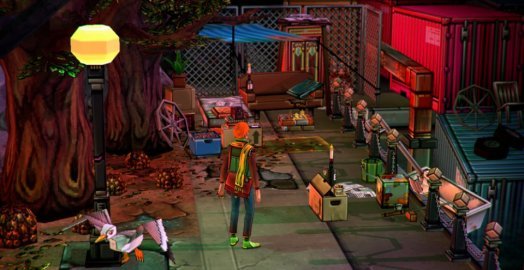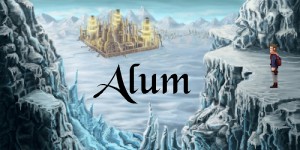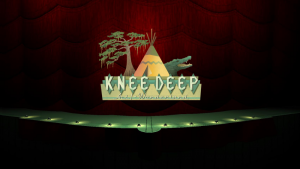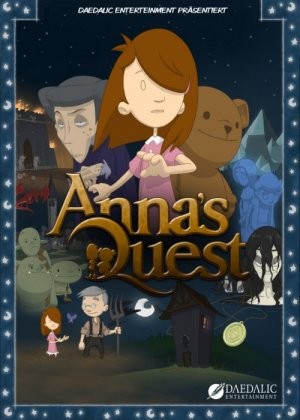Review for else Heart.Break()

I’ve never before been faced with a game that I enjoyed playing and yet still can’t quite bring myself to outright recommend to anybody but the most niche gamer. The unusual else Heart.Break() puts me in precisely that situation; bearing a title that left me entirely nonplussed until the game’s final moments is merely the beginning of a one-of-a-kind experience that you’ll probably either love or hate.
Though not perfect, else Heart.Break() does several things that are wholly unique. For starters, it combines the story-driven approach of point-and-click adventures with the open-ended freedom of a sandbox game. In doing so, it lets you pretty much set your own path while characters (and events) around you adhere to strict schedules as time ticks through the game’s day/night cycles. Far more impactful, however – and I suspect this will be the game’s make-or-break moment for many – it requires players to learn how to read and write the game’s actual code in order to be successful. I’ll go into more detail about this later, but suffice to say that those without a prerequisite background in programming or lacking a highly logical mindset will struggle through many of the game’s key sections.
The story starts out pretty mundane, and remains that way for at least the first half of the game’s 12-15 hour length. Sebastian is your average 20-something guy without much direction in life at the moment. So when he gets a phone call offering him a job as a salesman for a local soda company, he accepts despite the catch that he has to pack up and travel to the town of Dorisburg. Immediately after arriving and getting off the boat, it’s clear that this town is… different. Working-class citizens and quaint yet comfortable buildings share space in a world with computerized flower gardens, doors that malfunction and lead to rooms they aren’t connected to, and mysterious suit-and-tie-clad men in black who look like something out of ‘80s espionage fiction.
After simply trying to learn the ropes of his new job (and getting his bearings in the town’s confusing geography), Sebastian eventually makes friends with an enchanting young woman in a night club, who introduces him to a group of underground hackers whose purpose is to waylay the machinations of the “evil” Ministry who controls all computer activity in town. The trouble is, you basically have to take this information on good faith, since there really isn’t very much actually happening to that point (and nothing at all relating to Ministry, underground resistance, or anything). The game purposely bombards you with banal day/night cycles early on, during which your only objective seems to be to sell some soda to Dorisburg’s citizens. And for all its obvious mysteries, I honestly couldn’t muster much of an interest in many of the characters, including the potential love interest. Characters often don’t really matter outside of their designated role of either “information provider” or “space filler”.
But while the game lacks much impetus during these beginning hours, I was still impressed with how the developers arranged for key events to play out in flexible ways, depending on your actions and where you decide to go day in and day out. For example, if you aren’t present for a vital piece of information at a certain moment, a messenger may come and seek you out to deliver the info that way. Or you’ll receive an invite to a party at a local club, but if you choose not to go (or sleep right through it), you will miss out on some important news, which you’ll later receive in a different fashion.
You have the run of (almost) all of Dorisburg right from the get-go, and secondary characters will follow their own schedules, so you will miss out on things now and again. In one instance I had to choose between attending a date with the girl of Sebastian’s dreams or sneaking into the local radio station to smuggle out an important item for the beleaguered DJ being investigated by the Ministry. Most of the time, else Heart.Break() offers multiple ways through its narrative, so you shouldn’t become stuck or at a loss too often.
Despite the best-laid plans, I did experience a few occasions when a plot thread wasn’t tied up or a conversation referenced something I clearly should have been party to but simply wasn’t due to the nature of the open-world sandbox gameplay. Though noticeable, however, these moments don’t detract greatly from the overall experience – you just accept it’s the nature of the beast and move on. Things do become quite a bit more streamlined during the second half of the game, once you’ve joined the underground resistance and have picked up your very own hacking device, at which point the game ditches all pretense at reality and proceeds to shove players down the rabbit hole.
Although else Heart.Break() resembles a traditional adventure in its controls, this similarity does not extend to the type of puzzle-solving many of us are used to. While you can pick up many items around town, very few are actually usable (finding a cigarette to offer a character asking for a smoke, for example). The majority of items consist of floppy disks you’ll find strewn across town whose contents can be read, though that’s the extent of their use. In a strange move, inventory space is limited so I started designating certain rooms and areas around town as “dumping grounds” for disks I’d already read and needed to get rid of. Since inventory-based gameplay is in short supply, the game prides itself on throwing a whole new type of “puzzle” at you: the hacking and recoding of objects in the gamespace.
For one reason or another – I could never quite decide if Dorisburg exists in a virtual reality plane, if it was all just a dream, or any other number of possible explanations – nearly everything in else Heart.Break() can be hacked into (and altered!) with your device once you’ve acquired it. Whether you’re changing the side effects of drinking a mug of joe, bypassing a security clearance, or jacking into a fuse box to travel the network in the dematerialized form of a collection of neurons, ready to reassemble at some new location, your hacking abilities quite literally open up the game world in ways I’ve never seen a game do before.
Of course, this ability comes at a price: instead of being offered clickable menus to interface with Dorisburg’s virtual pathways, you’ll have to literally take a crash course in learning how to code using Sprak, the game’s programming language. Every hackable object in the world follows its pre-programmed code, and you’ll need to know how to make sense of it, then change it to suit your needs. The set of rules to abide by is fairly rigid; a space in the wrong place, missing parentheses, or failure to capitalize a letter will all kick the code back with an error. You’ll have to create new code perfectly to succeed in your mission.
Not having much background in the field myself (apart from a bit of self-taught BASIC twenty-some-odd years ago), I was able to make do… barely. Manuals strewn through the game world and a character that walked me through some beginner lessons eased the transition a little. When worse came to worst, there was always the option to find a similar bit of existing code, and whip out the old pen and paper to copy it down and learn by imitating. Still, the programming bit, though certainly a unique selling point, will easily be a major turn-off for some, giving else Heart.Break() a very limited appeal.
Now, you’d think that the ability to alter your world at the most basic level would open the game up to unfettered creativity and limitless reasons to go off script and tool around in its sandbox. Sadly, I found very little reason to stray away from the pre-ordained path the developers wanted me to follow. There just isn’t much to do in Dorisburg – there aren’t any side quests to speak of (only one or two optional distractions that I encountered), and selling soda and hacking lamps gets old really quickly. The freedom to go and “do things” ultimately requires that there be “things to do” in Dorisburg, and this simply isn’t the case. Though hacking becomes a major part of the main storyline during the game’s second half – the resistance movement will send you on missions around town to infiltrate hostile facilities and gather intel, activities that would be impossible with just your charm and good looks – I would’ve loved to be able to cause some meaningful mischief on my own as well.
This noticeable sparsity of content extends to the game’s music as well. Generally, the only sounds I’d hear walking around the city would be my own footsteps, the slamming of doors I was passing through, or the scream of a gull or the clang of the streetcar outdoors. Actual music only plays if near a source in the game world, like a radio, TV, or the DJ in the club – and then is usually a thumpy techno rhythm that did absolutely nothing for me. I suppose it’s more realistic this way, but after a few hours the near-silence became pretty deafening. While this may be perceived as nothing more than a minor annoyance for the most part, the absence of music at key moments – say, for example, during the game’s final climax – is a much more serious omission that I can’t look past so easily. Nor is there any voice acting, so prepare for dialog full of the pop sounds of speech bubbles opening and closing.
On the bright side, the game has a charming, lovingly-crafted stylized look that is immediately engaging. Colors are vibrant, almost cartoonish, and there’s a lot to look at in the environments. My immediate impression right off the bat, as a blocky boat chugged its way toward a pixelated sunset, was of a cross between the 8-bit visuals of Minecraft and the pastel splendor of The Sims. This first impression isn’t entirely accurate though, as it belies the amount of attention to detail the designers have included when decorating both inside and outdoor spaces: apartments and offices are chock full of things to see at every turn, and character movements are animated fluently, with different actions like dancing, sleeping, and typing.
The isometric camera view does tend to be more of a hassle than a boon though; when turning the camera for a 360-degree field of vision (right-clicking and dragging lets you adjust both horizontal and slightly vertical angles), objects like walls, trees, and buildings often get in the way, making it a real chore to see what you’re doing at times. This difficulty in getting a clear view of events, as well as the dynamic camera angle when entering a new location, made it a hell of a lot harder to get my initial bearings in Dorisburg, as locations I’d already visited would look entirely different when viewed from a new angle.
I don’t want to come across as being too nit-picky about else Heart.Break(). Issues like camera placement and sound design do persist, but they are outweighed by the game’s unique gameplay element and charming look. Despite its shortcomings, I found myself eager to return to it each day, ready to take on a bit more of its story, at least during the second half when activities have an actual purpose rather than just wandering around aimlessly all day. Other times I found a gleeful sense of achievement with the hacker tool, feeling like I’d actually learned a complex new skill. On the other hand, this review does serve as a cautionary tale of sorts, though not so much for any negative aspects. Rather, enjoying the game requires that you have a very clear understanding of what you’re getting into, and that you’re prepared for it. It’s an experience you won’t soon forget, but it certainly won’t be for everyone.






























